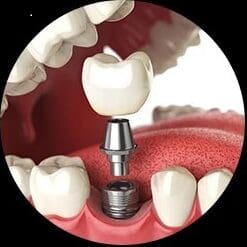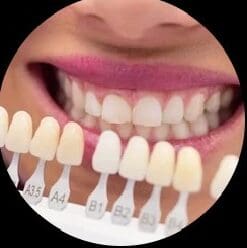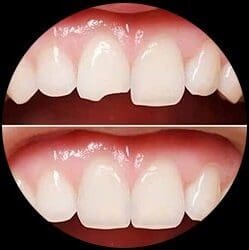Services
Exceptional Healthcare Services with VIP Benefits
 Free VIP complimentary transportation service between Airport/Hotel/Clinic, free hotel accommodations from 5 to 8 nights (depending on dental service) for each visit (for up to 2 people in 1 double room), and up to $500 credit for airfare when you spend $4,000 or more on any dental services in total per visit which will be applied toward your total dental bill. (if airfare is less than $500, then credit will be amount of fare). In order to receive airfare credit, clients must provide the hospital with a copy of the email showing flight and payment confirmation as they arrive at clinic.
Free VIP complimentary transportation service between Airport/Hotel/Clinic, free hotel accommodations from 5 to 8 nights (depending on dental service) for each visit (for up to 2 people in 1 double room), and up to $500 credit for airfare when you spend $4,000 or more on any dental services in total per visit which will be applied toward your total dental bill. (if airfare is less than $500, then credit will be amount of fare). In order to receive airfare credit, clients must provide the hospital with a copy of the email showing flight and payment confirmation as they arrive at clinic.
Dental Implants
 Dental implants are materials that are placed into the jawbone and mimic tooth roots after tooth loss. In modern dentistry, implant-supported restorations are primarily preferred to treat patients’ aesthetic, function, and phonation losses. After the teeth are extracted, the bone surrounding them begins to melt over time; this condition is called resorption. Bone resorption leads to a deterioration in the facial profile, decreased lip and cheek support, increased wrinkles around the mouth, and a decrease in the distance between the nose and the tip of the chin. Therefore, implant placement should be considered to replace extracted teeth in appropriate cases to prevent bone resorption.
Dental implants are materials that are placed into the jawbone and mimic tooth roots after tooth loss. In modern dentistry, implant-supported restorations are primarily preferred to treat patients’ aesthetic, function, and phonation losses. After the teeth are extracted, the bone surrounding them begins to melt over time; this condition is called resorption. Bone resorption leads to a deterioration in the facial profile, decreased lip and cheek support, increased wrinkles around the mouth, and a decrease in the distance between the nose and the tip of the chin. Therefore, implant placement should be considered to replace extracted teeth in appropriate cases to prevent bone resorption.
Fixed or removable prostheses, which are used to replace missing teeth, replace only the visible part of the lost teeth. However, implant-supported fixed prostheses allow the tooth roots to be placed in the mouth by targeting bone preservation. In this way, the bone forms a strong bond with the implant surfaces and allows them to function like natural teeth. Implant-supported fixed dentures prevent bone resorption by restoring chewing and biting functions. In addition, with the use of dental implants, the teeth adjacent to the lost tooth do not need to be reduced, and the health of the natural teeth is preserved.
Smile Design
 In the context of aesthetic dentistry, smile design is a special procedure applied to restore aesthetically impaired teeth and gums to a natural and dazzling appearance by the facial shape and personal needs of the patients. This application is a process that requires an interdisciplinary approach and is realized by integrating different treatment methods. Smile design is a prominent concept in the field of aesthetic dentistry. This special procedure is planned and applied with a personalized approach to the facial features, structural features of the teeth, and aesthetic concerns of the patients. Thus, it is aimed at patients to have a natural and attractive smile. Smile design is a complex process realized by integrating a series of treatment methods. In this process, dental aesthetic specialists create an individual treatment plan according to the needs of the patients, considering factors such as the shape, color, size, and position of the teeth. This treatment plan is applied in a way that ensures that the patient has a healthy and aesthetically beautiful smile. In this process, dentists, periodontologists, prosthodontists, and other specialists come together to offer customized treatments that will meet the individual needs of patients and help them achieve their natural smile.
In the context of aesthetic dentistry, smile design is a special procedure applied to restore aesthetically impaired teeth and gums to a natural and dazzling appearance by the facial shape and personal needs of the patients. This application is a process that requires an interdisciplinary approach and is realized by integrating different treatment methods. Smile design is a prominent concept in the field of aesthetic dentistry. This special procedure is planned and applied with a personalized approach to the facial features, structural features of the teeth, and aesthetic concerns of the patients. Thus, it is aimed at patients to have a natural and attractive smile. Smile design is a complex process realized by integrating a series of treatment methods. In this process, dental aesthetic specialists create an individual treatment plan according to the needs of the patients, considering factors such as the shape, color, size, and position of the teeth. This treatment plan is applied in a way that ensures that the patient has a healthy and aesthetically beautiful smile. In this process, dentists, periodontologists, prosthodontists, and other specialists come together to offer customized treatments that will meet the individual needs of patients and help them achieve their natural smile.
Zirconium Crown
 Zirconium crowns are one of the natural tooth coating methods that provide excellent results in dental aesthetics and have superior qualities in terms of strength and tissue compatibility. These high-tech crowns provide effective elimination of tooth loss and give people the opportunity to have an aesthetic smile that is indistinguishable from their natural teeth. Since zirconium crowns are produced using white-colored substrate material instead of metal, they offer an aesthetically pleasing appearance. This superior method of dental crowns has a wide range of applications. It offers an effective solution for the restoration of pre-cut teeth, correction of split teeth, elimination of dark lines caused by metal-supported crowns in the mouth, repair of tooth fractures, correction of aesthetic problems caused by discolored and structurally deteriorated fillings in cases where fillings are insufficient due to loss of material, and even correction of tooth distortions. Zirconium crowns, with their high-quality materials and unique design, represent one of the most reliable and effective solutions in modern dentistry. These special dental crowns, which maximize aesthetic concerns, offer a unique solution to give patients a healthy, natural, and attractive smile.
Zirconium crowns are one of the natural tooth coating methods that provide excellent results in dental aesthetics and have superior qualities in terms of strength and tissue compatibility. These high-tech crowns provide effective elimination of tooth loss and give people the opportunity to have an aesthetic smile that is indistinguishable from their natural teeth. Since zirconium crowns are produced using white-colored substrate material instead of metal, they offer an aesthetically pleasing appearance. This superior method of dental crowns has a wide range of applications. It offers an effective solution for the restoration of pre-cut teeth, correction of split teeth, elimination of dark lines caused by metal-supported crowns in the mouth, repair of tooth fractures, correction of aesthetic problems caused by discolored and structurally deteriorated fillings in cases where fillings are insufficient due to loss of material, and even correction of tooth distortions. Zirconium crowns, with their high-quality materials and unique design, represent one of the most reliable and effective solutions in modern dentistry. These special dental crowns, which maximize aesthetic concerns, offer a unique solution to give patients a healthy, natural, and attractive smile.
E-Max Veneers
 E-max veneers are a special type of ceramic that perfectly combines aesthetics and functionality in modern dentistry practices. This innovative dental restorative solution is carefully used to provide patients with realistic and natural-looking smiles. IPS E-Max ceramic is distinguished from other restorative materials by its superior durability and natural aesthetics. IPS E-Max ceramic used in dentistry applications has a completely metal-free structure. This allows light to shine through ceramic surfaces in the same way as it does on natural teeth. This ensures that the treated teeth blend almost imperceptibly with the natural teeth.
E-max veneers are a special type of ceramic that perfectly combines aesthetics and functionality in modern dentistry practices. This innovative dental restorative solution is carefully used to provide patients with realistic and natural-looking smiles. IPS E-Max ceramic is distinguished from other restorative materials by its superior durability and natural aesthetics. IPS E-Max ceramic used in dentistry applications has a completely metal-free structure. This allows light to shine through ceramic surfaces in the same way as it does on natural teeth. This ensures that the treated teeth blend almost imperceptibly with the natural teeth.
Offering high aesthetics and a natural look, this special ceramic material promises long-lasting quality, allowing patients to use it for a long time. In addition, the wide range of colors allows patients to choose the shade that best matches the natural color of their teeth. IPS E-Max ceramic is also characterized by its compatibility with the human body, making it a reliable option for patients.
Full Veneers
 Full veneers are dentures that are applied to the front surfaces of teeth and covered with a tooth-colored material. These veneers are used to improve the shape, size, color, and appearance of teeth. As well as being preferred for aesthetic purposes, they can also be used to repair broken or worn teeth. Full veneers increase the durability of teeth as well as their aesthetic appearance. They can also be personalized with color options and natural appearance. High-quality full veneers provide long-term wear, offering patients long-lasting satisfaction and comfort.
Full veneers are dentures that are applied to the front surfaces of teeth and covered with a tooth-colored material. These veneers are used to improve the shape, size, color, and appearance of teeth. As well as being preferred for aesthetic purposes, they can also be used to repair broken or worn teeth. Full veneers increase the durability of teeth as well as their aesthetic appearance. They can also be personalized with color options and natural appearance. High-quality full veneers provide long-term wear, offering patients long-lasting satisfaction and comfort.
Composite Bonding
 Composite bonding stands out as one of the basic applications of modern aesthetic dentistry. Composite bonding, which is defined as restorative procedures consisting of composite material applied to tooth surfaces with aesthetic concerns such as color changes, shape modifications, size increases, or correction of defects in teeth without damaging the teeth, refers to bonding material to the tooth. It offers a significant improvement in terms of aesthetics.
Composite bonding stands out as one of the basic applications of modern aesthetic dentistry. Composite bonding, which is defined as restorative procedures consisting of composite material applied to tooth surfaces with aesthetic concerns such as color changes, shape modifications, size increases, or correction of defects in teeth without damaging the teeth, refers to bonding material to the tooth. It offers a significant improvement in terms of aesthetics.
These techniques are carefully applied by dentists to provide a natural and aesthetic result while allowing patients to achieve the desired appearance of their teeth. Standard composite materials do not reflect light, appear dark and dull against light, and therefore do not give an aesthetic appearance. However, technological developments have changed the materials used in dentistry, and materials and bonding materials that can imitate tooth enamel very well have started to be produced. These developments have opened a new era in aesthetic dentistry.
Periodontology
 Periodontology is a branch of dentistry that studies the health of teeth and surrounding tissues. In this field, the diagnosis and treatment of gum diseases and the maintenance of health after the disease is an important priority. Gum diseases cover a wide range of conditions, starting from simple gingivitis and progressing to the loss of teeth and loss of jaw bones. Symptoms of these diseases include swelling, reddening, bleeding, and recession of the gums; tooth lengthening; bad breath; displacement, spacing, and eventual loss of teeth. Bleeding gums is an important symptom that can be easily recognized by patients and can occur during tooth brushing when consuming hard foods or spontaneously.
Periodontology is a branch of dentistry that studies the health of teeth and surrounding tissues. In this field, the diagnosis and treatment of gum diseases and the maintenance of health after the disease is an important priority. Gum diseases cover a wide range of conditions, starting from simple gingivitis and progressing to the loss of teeth and loss of jaw bones. Symptoms of these diseases include swelling, reddening, bleeding, and recession of the gums; tooth lengthening; bad breath; displacement, spacing, and eventual loss of teeth. Bleeding gums is an important symptom that can be easily recognized by patients and can occur during tooth brushing when consuming hard foods or spontaneously.
These diseases are usually chronic and may go unnoticed for a long time due to the absence of pain. If there are symptoms such as bleeding and enlargement of the gums, tartar formation, gingival recession, loose teeth, bad taste, and bad breath, a periodontologist should be consulted. The main aim of periodontal treatment is to preserve seemingly hopelessly unhealthy teeth in the mouth. Depending on the type and severity of the disease, various treatment methods are applied.
Orthodontic

Orthodontics is a specialized field of dentistry that mainly diagnoses, controls, and focuses on the prevention and treatment of maladjusted and crowded teeth. This specialty applies various treatment methods to ensure the correct position of the teeth and create an aesthetic smile.
Why Do Orthodontic Problems Occur, and How are They Treated?
Orthodontic disorders, such as the lower jaw being in front or behind, play a critical role in determining treatment methods depending on the age of the patient. If the upper and lower jaw structure is behind during adolescence, effective treatment methods can be applied with orthodontic techniques. However, in adults, a combination of orthodontics and surgical intervention is usually required for the treatment of skeletal disorders. Jaw mismatches can be observed due to functional disorders, such as mouth-breathing habits. In mouth-breathers, the upper part of the jaw may remain narrow, resulting in a V-shaped jaw structure.
Laser Teeth Whitening
 Teeth whitening is a popular cosmetic procedure that is an indispensable way to create aesthetically appealing white smiles. With advancing age, teeth tend to darken naturally due to changes in their mineral structure. This discoloration is associated with habits such as smoking, as well as the consumption of certain foods and beverages that can lead to stain formation. Laser teeth whitening offers an effective solution to such problems. Teeth whitening is a simple and effective way to improve smile aesthetics and reduce tooth discoloration. Whiter teeth contribute to a youthful and attractive appearance.
Teeth whitening is a popular cosmetic procedure that is an indispensable way to create aesthetically appealing white smiles. With advancing age, teeth tend to darken naturally due to changes in their mineral structure. This discoloration is associated with habits such as smoking, as well as the consumption of certain foods and beverages that can lead to stain formation. Laser teeth whitening offers an effective solution to such problems. Teeth whitening is a simple and effective way to improve smile aesthetics and reduce tooth discoloration. Whiter teeth contribute to a youthful and attractive appearance.
There are various teeth whitening options available today, the most popular of which is laser teeth whitening. Laser teeth whitening treatment is a cosmetic dentistry procedure that is used in addition to other whitening techniques performed in dental clinics. The laser teeth whitening procedure is performed under the supervision of a dentist. The whitening gel to be applied to your teeth is applied with an intense formula containing hydrogen peroxide. This gel is then heated with laser beams to whiten your teeth quickly.



